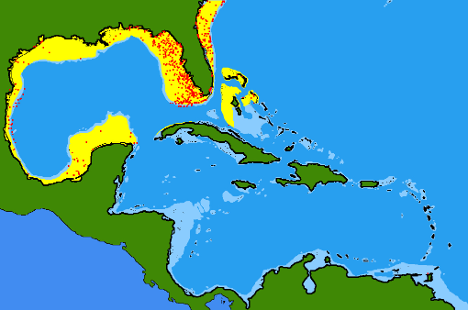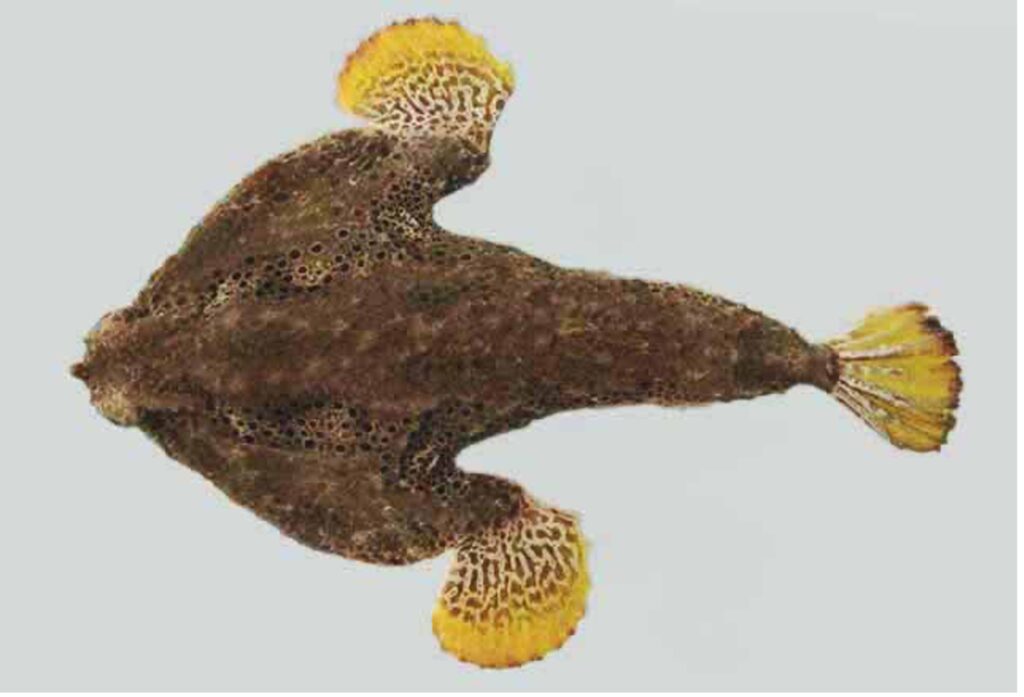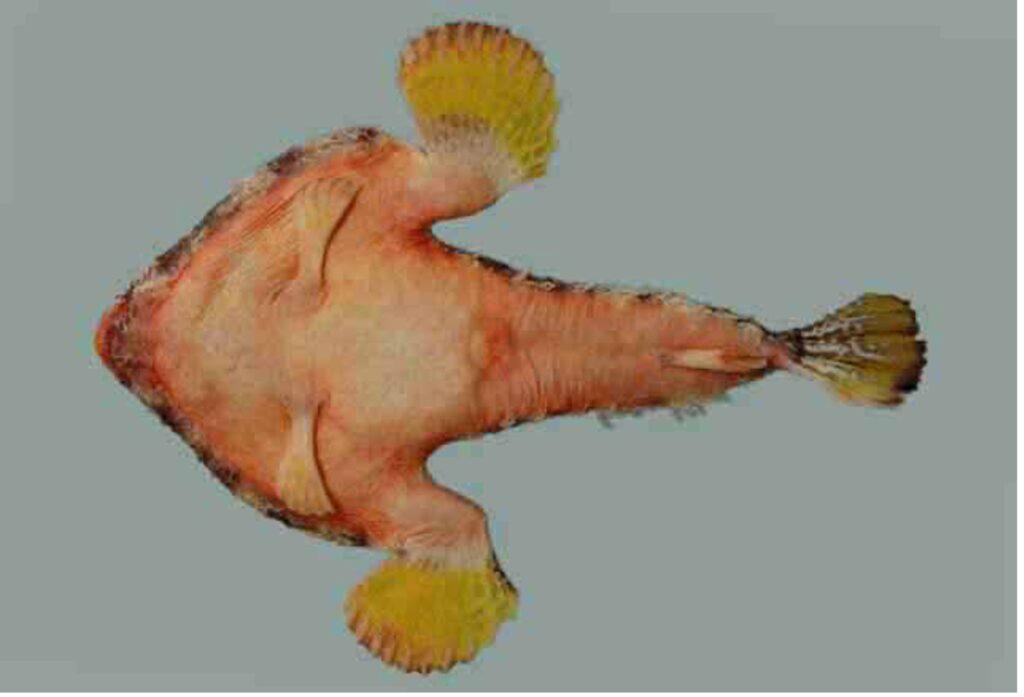Dr. Geoffrey Smith
NWFSC Biology Instructor
With Halloween just a few days away, we’ll be highlighting a fish whose name matches the holiday. The Polka-dot Batfish is one several species of batfishes found in our local waters, but it is by far the most abundant and commonly encountered. Their range extends from North Carolina southward along the Atlantic coast and throughout the Gulf of Mexico (Figure 1). The batfishes belong to the Family Ogcocephalidae which essentially translates to swollen or enlarged head. This refers to characteristically wide anterior (head region) portion of these fish when compared to the rest of their body (Figure 2). Their common name comes from the widespread spots on the upper surface of their body and their modified pectoral fins that are somewhat wing-like and in combination with their modified pelvic fins, allows them to “walk” across the bottom in a manner reminiscent of a bat walking on its elbows (Figure 2). The batfish are relatively slow and awkward swimmers, but they can easily “walk” across open sandy sea floors with their modified pectoral fins. Due to their relatively slow swimming, Polka-dot Batfish are highly reliant on camouflage and stealth to sneak up on their prey, which themselves are often slow (such as small hermit crabs and snails, small crabs, and benthic worms). But the batfishes also have one other trick up their sleeve to capture faster prey like small shrimp and fish. The batfishes belong to a larger category of fish (an Order) that includes the anglerfishes. And similar to anglerfish, many batfish species have dorsal fin rays that have been modified into a “lure” that is twitched and releases chemicals in the water to attract prey (see linked video). In terms of recreational or commercial harvest, batfish are not targeted as a food fish, but they are occasionally harvested for the aquarium trade and large numbers may be captured as bycatch in shrimp trawls. So if you happen to be wading, snorkeling, or diving in our local water (or really anywhere in the gulf), keep an eye out for one of the most unusual looking fish in our area.

Figure 1: Distribution of Polka-dot Batfish within the Caribbean and Gulf of Mexico (https://biogeodb.stri.si.edu/caribbean).


Figure 2: Dorsal/top and bottom/ventral views of a Polka-dot Batfish. Note the numerous spots (polka-dots) on the dorsal surface and the modified pectoral and pelvic fins used for walking. Photo credit: J. Van Tassell and D. Robertson (https://biogeodb.stri.si.edu/caribbean).



